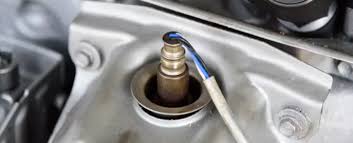What is an Oxygen Sensor and How Does It Work?
The oxygen sensor (O2 sensor) monitors the level of oxygen in your vehicle’s exhaust gases. It sends real-time data to the engine control unit (ECU), which adjusts the fuel-air mixture to optimize engine performance, fuel efficiency, and emissions.
Most modern vehicles have multiple oxygen sensors, typically located before (upstream) and after (downstream) the catalytic converter. These sensors help maintain proper combustion and ensure your vehicle meets emissions standards.
Why the Oxygen Sensor Matters
A failing oxygen sensor can cause poor fuel economy, rough idling, increased emissions, and even damage the catalytic converter. Replacing a faulty O2 sensor restores proper fuel mixture control, smooth engine performance, and emissions compliance.
Important to Know:
- Oxygen sensors usually fail gradually; symptoms may be subtle at first.
- OEM or high-quality sensors provide accurate readings and long-lasting performance.
- Replacing a faulty sensor promptly can prevent more costly repairs downstream, such as catalytic converter failure.
How Oxygen Sensor Replacement is Done:
- Diagnose and identify the faulty oxygen sensor using a diagnostic scan tool.
- Allow the exhaust system to cool if necessary.
- Disconnect the sensor’s electrical connector.
- Remove the old sensor with the proper tools.
- Install a new OEM-quality oxygen sensor and reconnect the electrical plug.
- Clear error codes from the ECU.
- Test drive to ensure proper engine operation and emissions compliance.
When to Replace Oxygen Sensors:
Oxygen sensors typically last 60,000–100,000 miles, depending on driving conditions and sensor type. Replacement is recommended when the sensor fails or triggers a Check Engine Light.
Signs You May Need a New Oxygen Sensor:
- Check Engine Light illuminated
- Poor fuel economy
- Rough idle or engine misfires
- Failed emissions test
- Hesitation or loss of power during acceleration
- Sulfur or “rotten egg” smell from the exhaust
How Important is This Service?
Oxygen sensors are critical for maintaining engine efficiency, fuel economy, and emissions compliance. Driving with a faulty O2 sensor can lead to higher fuel costs and long-term engine or catalytic converter damage. At Nationwide Mechanics, we provide expert diagnostics and replace oxygen sensors with high-quality OEM parts to keep your vehicle running efficiently and reliably.




